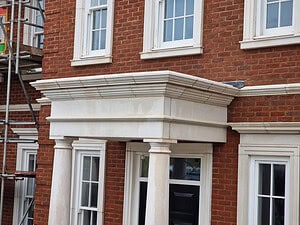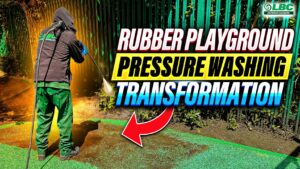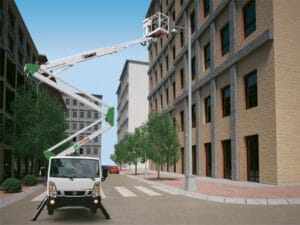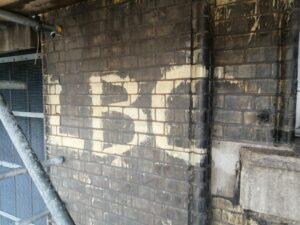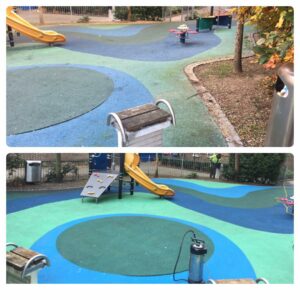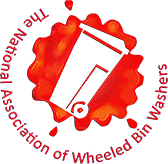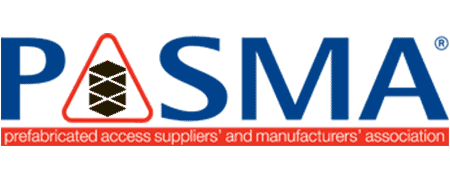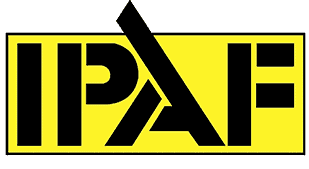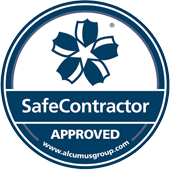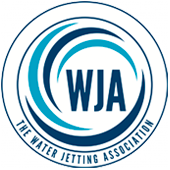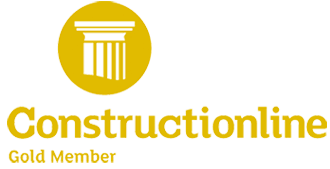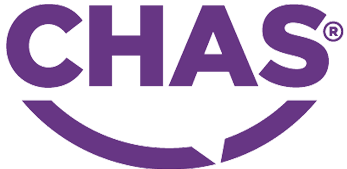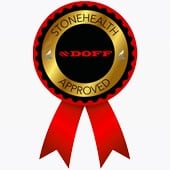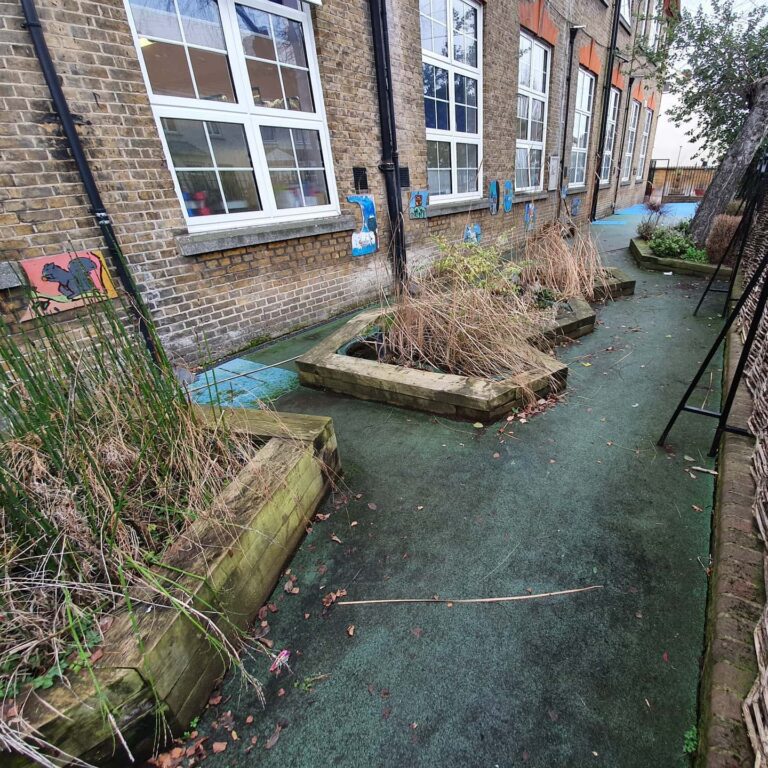
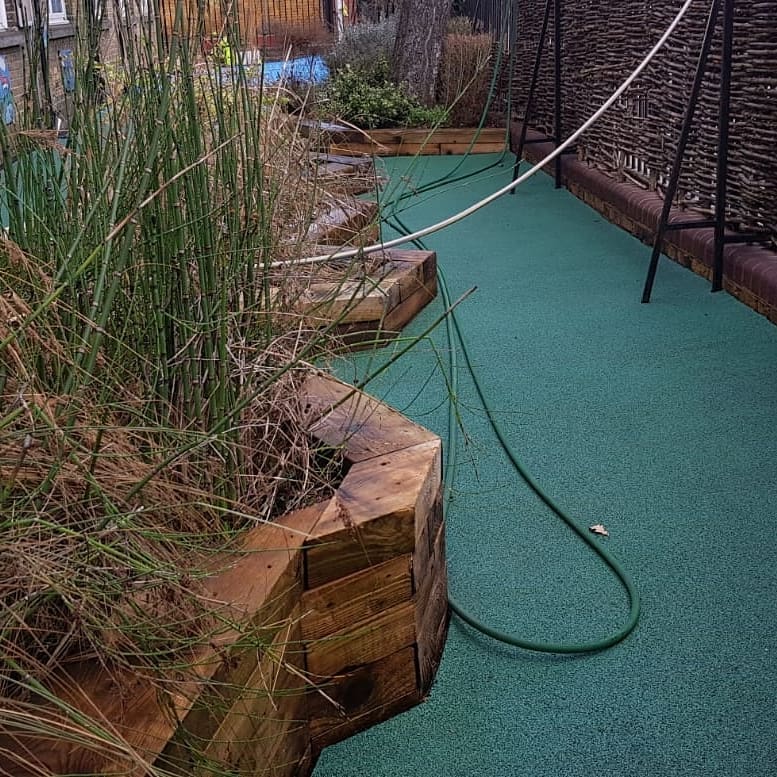
Wet Pour Rubber Play Area Cleaning is important to keep the area aesthetically appealing but more importantly to keep the area safe for use and fit for purpose.
Wet pour rubber or soft fall rubber as sometimes referred to is a popular choice for playgrounds, sports surfaces, and other outdoor areas because of its durability, safety features, and aesthetic appeal.
Due to the textured make up of the surface over time it becomes dirty with mould, algae and other organic growth growing in it and on it making the surface slippery.
Installing Wet Pour Rubber
The installation process for wet pour rubber involves several steps:
Site preparation: The installation area must be prepared by excavating the existing surface to the required depth. The ground must be leveled, compacted, and free from any debris or contaminants.
Base layer installation: A base layer of crushed stone or recycled rubber must be installed and compacted to create a stable and firm base.
Binding layer installation: A binding layer of polyurethane resin is poured over the base layer and spread evenly using a trowel. The binding layer helps to hold the rubber granules in place and create a stable and uniform surface.
Rubber granule application: A layer of rubber granules is applied on top of the binding layer and spread evenly using a trowel. The rubber granules come in various colours and sizes, allowing for customized designs and patterns.
Top layer installation: A top layer of polyurethane resin is poured over the rubber granules and spread evenly using a trowel. The top layer helps to seal the rubber granules in place and create a smooth and even surface.
Curing: The wet pour rubber surface must be allowed to cure for several days to ensure proper bonding and hardening of the resin layers.
Line marking and finishing: Once the surface has cured, line markings, and finishing touches can be added to the surface to create a customized and functional surface.
The installation process for wet pour rubber requires specialized equipment and expertise. It is recommended to hire a professional installer to ensure a high-quality and long-lasting installation.
Wet Pour Rubber Play Area Cleaning
If cleaning and maintaining your wet pour rubber in house here’s a step by step guide
Here are some steps to clean wet pour rubber:
Remove any debris: Start by removing any debris such as leaves, twigs, or small rocks from the surface. You can use a broom, leaf blower, or vacuum cleaner to do this.
Apply a cleaning solution: Mix a cleaning solution of mild detergent and warm water. You can also add a small amount of vinegar to the solution to help disinfect the surface. Apply the solution to the wet pour rubber surface using a garden hose or a pressure washer.
Scrub the surface: Use a soft-bristled brush or a scrubbing pad to scrub the surface gently. Be careful not to damage the surface by using a brush with stiff bristles.
Rinse the surface: Rinse the surface thoroughly with clean water to remove any soap residue. You can use a garden hose or a pressure washer for this.
Allow the surface to dry: Allow the wet pour rubber surface to dry completely before using it again. Avoid using the surface until it is completely dry to prevent slips and falls.
Regular cleaning of wet pour rubber surfaces can help keep them looking new and safe for use.
How do you Professionally clean Playground Surfaces?
How do you Maintain Wet Pour Rubber?
Once cleaned properly wet pour rubber is easier to maintain. After professional cleaning the wet pour will be clear from organic growths such as algae and mosses and you will have a clean base to maintain.
Maintenance of wet pour rubber can be done by using cleaning solutions which have ingredients that kill organic growths such as a biocidal wash. It’s important when using these products that after cleaning the surface is thoroughly rinsed down as these products can be very harmful to children if swallowed.
How often should you clean wet pour Rubber?
Depending on the local climate ad also local factors such as the amount of trees near to the surface will affect how often wet pour should be cleaned however once per year should be sufficient for most surfaces.
how is wet pour rubber installed
Wet pour rubber is a popular choice for playgrounds, sports surfaces, and other outdoor areas because of its durability, safety features, and aesthetic appeal. The installation process for wet pour rubber involves several steps:
Site preparation: The installation area must be prepared by excavating the existing surface to the required depth. The ground must be leveled, compacted, and free from any debris or contaminants.
Base layer installation: A base layer of crushed stone or recycled rubber must be installed and compacted to create a stable and firm base.
Binding layer installation: A binding layer of polyurethane resin is poured over the base layer and spread evenly using a trowel. The binding layer helps to hold the rubber granules in place and create a stable and uniform surface.
Rubber granule application: A layer of rubber granules is applied on top of the binding layer and spread evenly using a trowel. The rubber granules come in various colors and sizes, allowing for customized designs and patterns.
Top layer installation: A top layer of polyurethane resin is poured over the rubber granules and spread evenly using a trowel. The top layer helps to seal the rubber granules in place and create a smooth and even surface.
Curing: The wet pour rubber surface must be allowed to cure for several days to ensure proper bonding and hardening of the resin layers.
Line marking and finishing: Once the surface has cured, line markings, and finishing touches can be added to the surface to create a customized and functional surface.
The installation process for wet pour rubber requires specialized equipment and expertise. It is recommended to hire a professional installer to ensure a high-quality and long-lasting installation.

